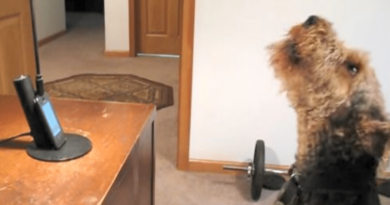Acute Stroke Care During COVID-19: AHA’s Emergency Strategy
[ad_1]
What your doctor is reading on Medscape.com:
APRIL 02, 2020 — American Heart Association/American Stroke Association Council Leadership has released temporary emergency guidance on management of acutestroke patients during the current COVID-19 outbreak.
The urgency of the situation prompted the AHA/ASA to forego their usual process, including peer review, in creating these guidelines for stroke centers nationwide. The message: Manage as best you can with reduced personnel, shortages of personal protective equipment, and limited availability of critical care beds.
“We all feel a sense of helplessness in the face of this crisis, and we all look for things we can do within our own personal scope,” guidance author Patrick D. Lyden, MD, told Medscape Medical News.
Stroke center providers nationwide started asking AHA/ASA leadership for advice. “For example, and very alarmingly, I got a question from a primary stroke center in the Los Angeles area whether they should even be seeing/treating patients at all! So we knew we had to say something,” added Lyden, from the Department of Neurology at Cedars Sinai Medical Center in Los Angeles, California.
The statement was published online April 1 in the journal Stroke.
Although the guidance is temporary and thus expected to change as the COVID-19 pandemic evolves, the AHA/ASA acknowledged and predicted some necessary realities that could affect providers and people presenting to stroke centers requiring emergency care.
For example, staff that typically assists with the triage and treatment of acute stroke emergencies may become ill or get redeployed to other care teams as the number of COVID-19 patients increases.
“The loss of stroke team members may create a significant gap in care,” the authors note. “We are aware of many stroke teams across the country expressing concern as to whether they can or will be able to continue to function.”
“Very importantly, the supply of vascular neurologists and nurse coordinators has limits — if we get sick, few other practitioners can step in and take over a Code Stroke or thrombectomy, so we have to be cautious and protect ourselves,” Lyden said.
Continued
“Teams must use their judgement, guided by local realities, and continue to try to treat as many acute stroke patients as possible,” the authors add.
Another reality is current and future shortages of personal protective equipment (PPE). Given the noncommunicative state and limited history available for many acute stroke patients presenting to emergency departments, all stroke patients should be presumed infected with COVID-19. This necessitates stroke neurologists protect themselves using complete PPE, even though the authors acknowledge this may not be possible at all times.
“Seek ways to minimize the use of scarce PPE in your medical center,” they advise. “Send fewest possible team members to see Code Stroke patients, and into rooms for follow up visits.” Enhanced use of telestroke and telemedicine services, when appropriate, could also obviate the need for PPE, they add.
Furthermore, some acute stroke patients will be symptomatic or test positive for COVID-19, and neurologists specializing in stroke care should be prepared to brief colleagues treating such patients in specialized COVID-19 treatment areas.
The authors also emphasize the importance of provider self-care during the pandemic. “Take care of yourselves, your families, and your teammates,” they write. “Stroke care has always been a multispecialty, collaborative effort…a true sense of a unified Stroke System of Care is needed now more than ever.”
The AHA/ASA is advising stroke neurologists to stay tuned for additional guidance in the near future.
[ad_2]
Source link





In experimental models of CVD, the role of E2 in reducing ventricular arrhythmias has been controversial buy cialis pills
Strategy of retrovirus directed recombinase mediated targeted BAC targeting RMBT buy cialis online overnight shipping
56 suppl 4 46S 51S cialis on sale in usa
Cost of Plavix on Medicare https://plavix.guru/ antiplatelet drug